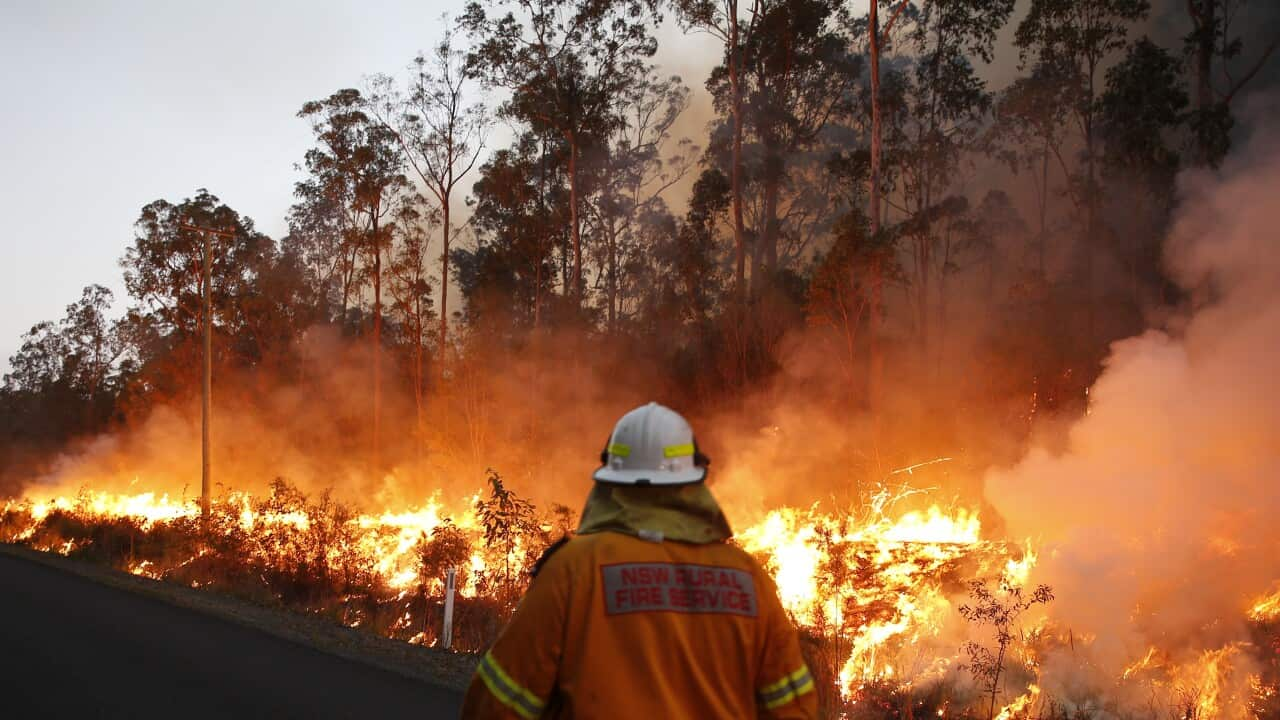Bushfire Risk Assessment Demystified: How to Interpret and Act on Your Outcomes
Wiki Article
The Importance of Bushfire Management in Fire Protection
In the realm of fire defense, the value of reliable bushfire management can not be underrated. As areas around the world come to grips with boosting instances of wildfires, the positive method to stop and reducing these all-natural calamities through critical bushfire monitoring strategies has actually arised as a vital element. Past the immediate hazard to human life and residential or commercial property, the interplay in between bushfire monitoring and ecological preservation, neighborhood involvement, and environment modification presents intricate challenges that need comprehensive remedies.Importance of Proactive Bushfire Avoidance
Aggressive bushfire avoidance approaches are vital in reducing the devastating effects of wildfires on ecological communities and areas. One key facet of proactive bushfire avoidance is fuel monitoring.Educating the public on fire safety practices and advertising area understanding about the value of bushfire avoidance are important elements of positive methods. Inevitably, positive bushfire avoidance plays a considerable role in safeguarding communities and ecosystems from the devastating effects of wildfires.
Role of Community Engagement in Fire Defense
Engaging the neighborhood in fire security efforts is essential to enhancing the efficiency of positive bushfire prevention techniques. Community engagement plays an important function in cultivating a collective understanding of the dangers posed by bushfires and the relevance of readiness steps. By entailing neighborhood citizens, authorities can disseminate important info ablaze safety methods, emptying treatments, and very early caution systems, equipping individuals to take positive steps to safeguard their lives and properties.Additionally, area involvement initiatives aid build strength within communities, cultivating a sense of unity and shared responsibility in mitigating fire threats. Through workshops, training sessions, and area events, citizens can find out exactly how to produce defensible spaces around their homes, lower fire fuel loads, and recognize possible threats. By fostering a society of preparedness and partnership, areas can strengthen their capability to respond properly to bushfire emergencies, decreasing the influence on properties and lives. Eventually, area involvement is a keystone of thorough fire protection techniques, emphasizing the relevance of collective activity in guarding vulnerable locations from the danger of bushfires.
Significance of Wild Animals Conservation in Bushfire Monitoring
Preservation of wildlife plays a critical role in reliable bushfire administration techniques, making certain the protection of varied environments and biodiversity in fire-prone regions. Wildlife conservation is vital as it adds to the total resilience of communities, aiding in their ability to endure and recover from the effect of bushfires. By saving habitats and safeguarding different varieties, the all-natural equilibrium within these ecosystems is maintained, which is important for their long-term wellness and sustainability.Additionally, wildlife conservation also assists in lowering the threat and strength of bushfires. Healthy and balanced ecosystems with well-preserved wildlife populations can serve as all-natural firebreaks, reducing the spread of fires and limiting their damaging possibility (Bushfire Risk). this content Certain animal species, like burrowing pets or birds that spread out seeds, play special roles in assisting or stopping fires in the post-fire regeneration of environments
Including wildlife conservation into bushfire administration methods is not only crucial for safeguarding biodiversity but additionally for advertising the total health and durability of communities in the face of raising fire hazards.
Advantages of Strategic Gas Decrease Programs
Tactically carrying out gas decrease programs is crucial in minimizing the threat and effect of bushfires in fire-prone areas. These programs involve regulated burning, mechanical clearing, and various other approaches to minimize the amount of flammable vegetation available to sustain wildfires. By purposefully reducing fuel lots in crucial locations, such as close to domestic communities or critical infrastructure, the strength and spread of bushfires can be substantially reduced.One of the primary advantages of gas reduction programs is the enhancement of overall fire durability in a community. By creating critical gas breaks and lowering the connection of plant life, these programs help to interrupt the course of a bushfire, making it simpler for firemens to have and snuff out the blaze. In addition, gas decrease programs can secure biodiversity by stopping excessively intense fires that can devastate environments and intimidate wildlife populations.
Furthermore, these programs can also safeguard human lives and property by lowering the threat of disastrous fires that position a significant risk to areas. Eventually, calculated fuel reduction programs play an essential role in proactive bushfire monitoring and cultivating a much safer setting for both people and nature.
Influence of Climate Change on Bushfire Danger

Greater temperatures cause drier vegetation, making it more vulnerable to ignition. Minimized rainfall in certain areas prolongs drought conditions, additionally raising the flammability of the landscape. In addition, the transforming climate has changed wind patterns and atmospheric problems, bring about even more unpredictable fire habits and rapid fire spread.
As the environment remains to alter, the frequency and intensity of bushfires are expected to increase, demanding a positive and adaptive technique to bushfire administration. Approaches must advance to make up the changing risk landscape, including climate estimates and thinking about lasting resilience in fire administration planning. Attending to the influence of environment change on bushfire danger is essential in establishing reliable methods to secure lives, building, and the atmosphere.
Verdict
In conclusion, positive bushfire prevention, neighborhood interaction, wild animals conservation, tactical gas reduction programs, and that site consideration of climate modification are critical components in reliable fire protection. By implementing these strategies, we can much better manage bushfire threats and secure both human lives and the setting. BMP. It is essential that stakeholders work with each other to focus on these procedures to decrease the destructive effect of bushfires on environments and neighborhoods

As the environment proceeds to transform, the regularity and intensity of bushfires are anticipated to climb, necessitating a adaptive and positive method to bushfire management.In verdict, positive bushfire avoidance, area involvement, wildlife preservation, tactical fuel reduction programs, and consideration of climate change are vital elements in reliable fire defense.
Report this wiki page